Arts & Culture
The Magic of the Museum Gift Shop is Alive and Well in Baltimore
In a city of world-class museums, gift shops abound. And inside each one is another curated collection tailored to reflect the people, objects, and stories that make that institution special.
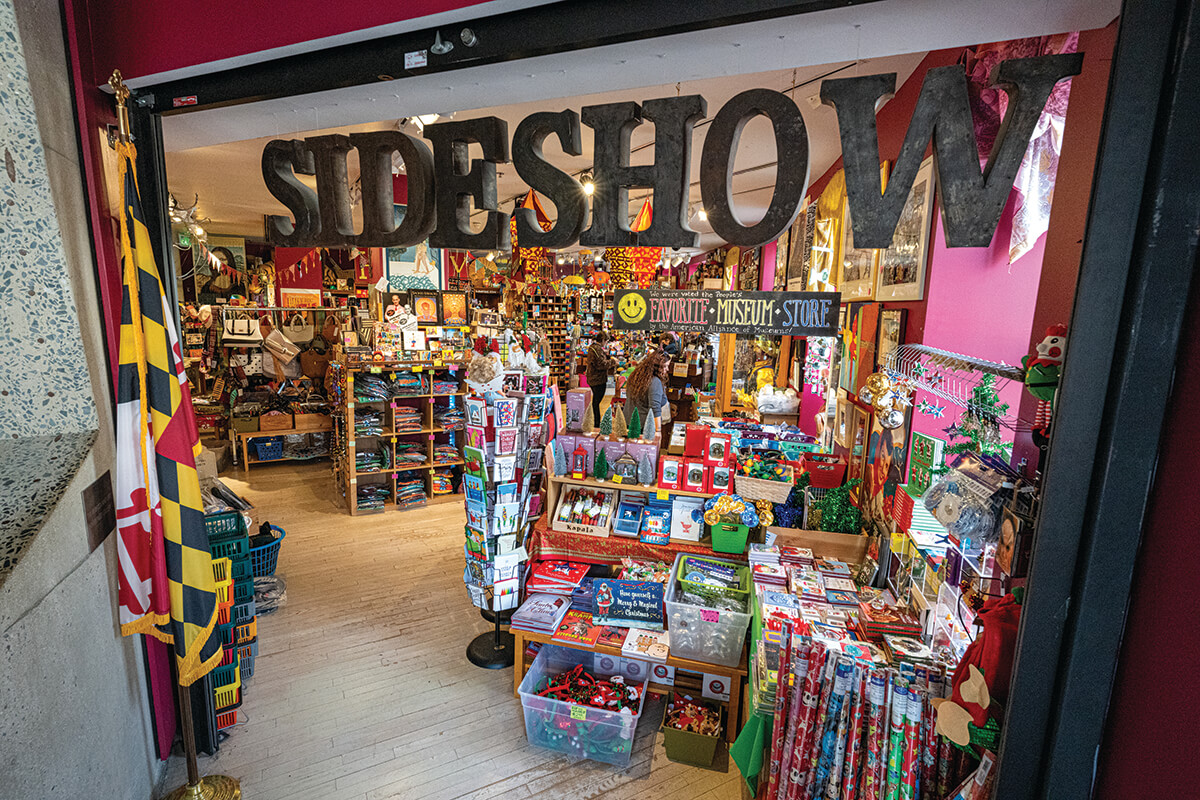
I was seven years old, standing by the cash register at the National Air and Space Museum in Washington, D.C., with three dollars wadded in my hand, free to choose anything I wanted from the gift shop. My sights were set on the space ice cream—the obvious choice of any red-blooded child of the 1980s. A Neapolitan wafer of Styrofoam-like sugar, it was the next best thing to bouncing weightlessly around the moon’s potholes.
This was no mere souvenir. Instead, my crinkly package of freeze-dried dessert was a tangible thread connecting my little-kid body to the superheroes who ascended into the stars. And from that instant, it was official: I was hooked. Not on the space ice cream—it’s pretty disappointing, actually—but on the magic of the museum gift shop.
Of course, these abound in Baltimore, a city of world-class museums that run the gamut from industrial history to postmodern art. And inside each one, the gift shop is another curated collection, tailored to reflect the people, objects, and stories that make that museum special.
Some are cool. Some are whimsical. Some are surprising. All of them distill the contents of their collections to human size, offering a little bit of the extraordinary to fit into our everyday lives. Their curios let you take some of that wonder home with you, as well as, often enough, the vibrancy, diversity, and unmistakable je ne sais quoi of Baltimore.
Every time I’m in town, I make sure to stop into at least one. A trip to the museum just isn’t complete without them.
American Visionary Art Museum
The G.O.A.T. of Baltimore museum shops is without a doubt Sideshow at the American Visionary Art Museum in Federal Hill. Owned by renegade retailer Ted Frankel, aka “Uncle Fun,” Sideshow is one-part outsider art gallery and one-part tchotchke dreamscape.
Local filmmaker John Waters describes it as “the best museum gift shop you’ve ever been to in your life,” and clearly the man knows what he is talking about. A funky riot of color, objects, books, clothing, antiques, and crafts, each surface and cupboard is bursting with everything you never knew you needed, be it for gag gifts, artsy gifts, kids’ stuff, grown-up stuff, and even stuff for your own home.
There’s a working Zoltar machine, hundreds of novelty sunglasses in the most improbable shapes and colors, whoopee cushions and miniature naked baby dolls, carved coconut monkeys and a stuffed tiger the size of a loveseat. You can spend hours opening tiny drawers full of glass eyeballs or perusing the world’s most robust supply of trick buzzers, squirt cameras, and fart powders.
But the true heart of Sideshow—and where it most closely reflects AVAM’s philosophy of joyful self-expression—is found in the rotating exhibits of artworks by contributing artists from across the country.
It was in this section that I found my favorite museum shop find of all time, a Christmas tree angel crafted from a National Bohemian beer can. To me, that little topper encompasses the spirit of AVAM’s Sideshow—a celebration of the wonder, whimsy, and imagination of those who are called to create. And how Baltimore is that?
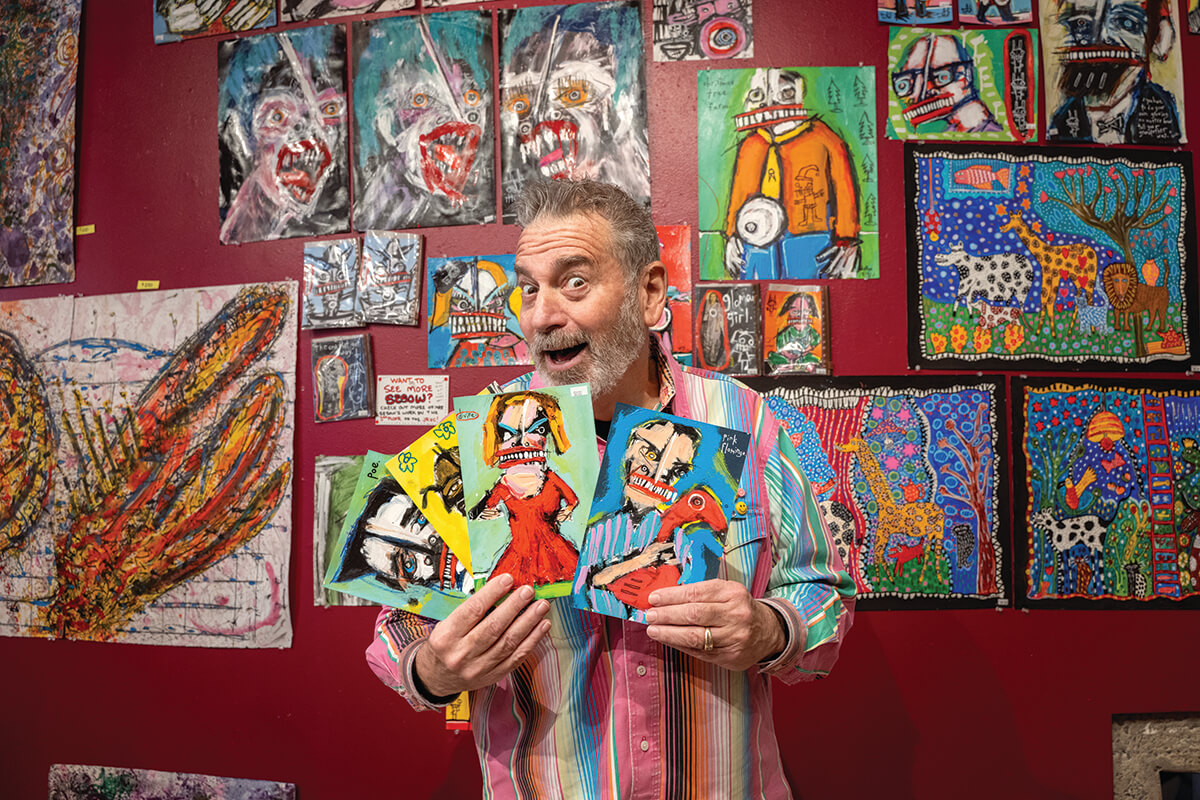
Baltimore Museum of Art
Think of it as the Metropolitan Museum of Art—in miniature. The BMA’s collections include 97,000 works that span the art of ancient Egypt to some of the most significant works of modern-day.
The breadth is the point. By developing, maintaining, and now broadening a deep, global collection of the best 18th-, 19th-, and, increasingly, 20th- and 21st-century art and making it accessible to the public, the BMA continues to cultivate a vibrant and healthy city. After an hour or two of edification in the museum’s collections, with the help of free admission, I cultivate my civic duty with a stop in the BMA’s expansive gift shop.
Snag some Cone Collection-inspired journals, prints, and notecards, and don’t sleep on the shop’s jewelry section, which bypasses “statement” and goes right to “declaration.” Collars of acid-treated brass, necklaces of blown-glass globes, and geometrical wire bracelets mirror the Calders in the sculpture garden and Matisse paintings in the galleries.
The shop transforms with each changing exhibition (this past summer’s The Culture hip-hop show had an epic selection), so check out the latest and plan your shopping list accordingly.
I always come prepared to be enchanted and am never disappointed, with my best BMA purchases being a pair of ever-chic punched gold earrings with tiny metallic rays and a postcard of Vincent van Gogh’s painting of hobnailed boots. Pinned above my desk, the latter transports me in an instant to the cool, quiet beauty of the museum’s halls.
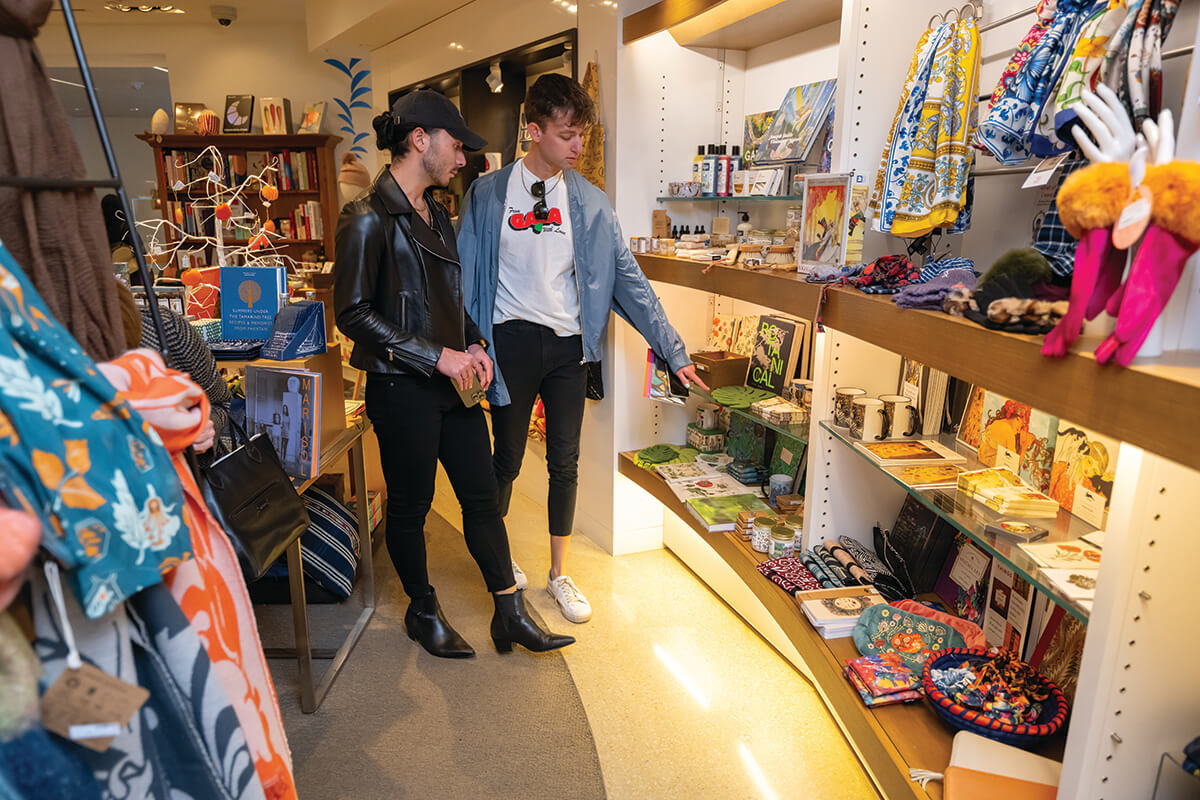
Baltimore Museum of Industry
“Industrial chic” is a recent trend, but at the BMI in Locust Point, it was always in style. Their exhibits feel like a Barry Levinson film set come to life—I love to wander through recreated historic shopfronts, printing presses, and workrooms under the glow of neon signs from bygone businesses, traveling back in time each time I turn a corner.
And the museum shop celebrates the city’s long tradition of manufacturing, too, with merch featuring the likeness of the neighboring Domino Sugars sign and books detailing the story of Baltimore’s packing houses, steel mills, and umbrella factories.
The mission of the museum especially shines through in their “Made in Baltimore” section, where you can buy one-of-a-kind treasures crafted on-site. Definitely check out the wonderful handmade iron keychains of beech leaves made by volunteer blacksmith Bob Webber on the BMI’s own working forge. A lifelike little leaf hangs from my key fob, a reminder that I need to plan my annual BMI pilgrimage for 2024.
The BMI also hosts entrepreneur pop-up events throughout the year, where you can support local small businesses and artisans selling prints, crafts, food, artwork, and other goods, including the seasonal farmers market that takes place in its parking lot come spring.
Maryland Center for History and Culture
Who needs reproductions when you can get the real thing? It makes perfect sense that a museum shop celebrating Maryland’s history and culture would sell antiques and vintage clothing on consignment, which has my name all over it.
Just a few steps from the displays of Orioles team cleats and the New Look sportswear of Frederick fashion designer Claire McCardell, you can find your own Maryland treasures at the MCHC. Snap up period finds like chased copper julep cups from the glitzy brownstones of Mount Vernon or fabulous hats from the Hutzler’s department store.
The museum’s changing exhibits, like the recent retrospective on one-time Marylander Jim Henson, also infuse the shop with all sorts of unique state-centric goodies impossible to find anywhere else.
A few years ago, I picked up a jaunty straw clutch from the 1950s, imagining it tucked under the arm of some well-to-do lady taking in a few races at Pimlico. I carry it around in the summertime to channel a little bit of Baltimore’s post-war glamour. And I often think that would make the MCHC proud.
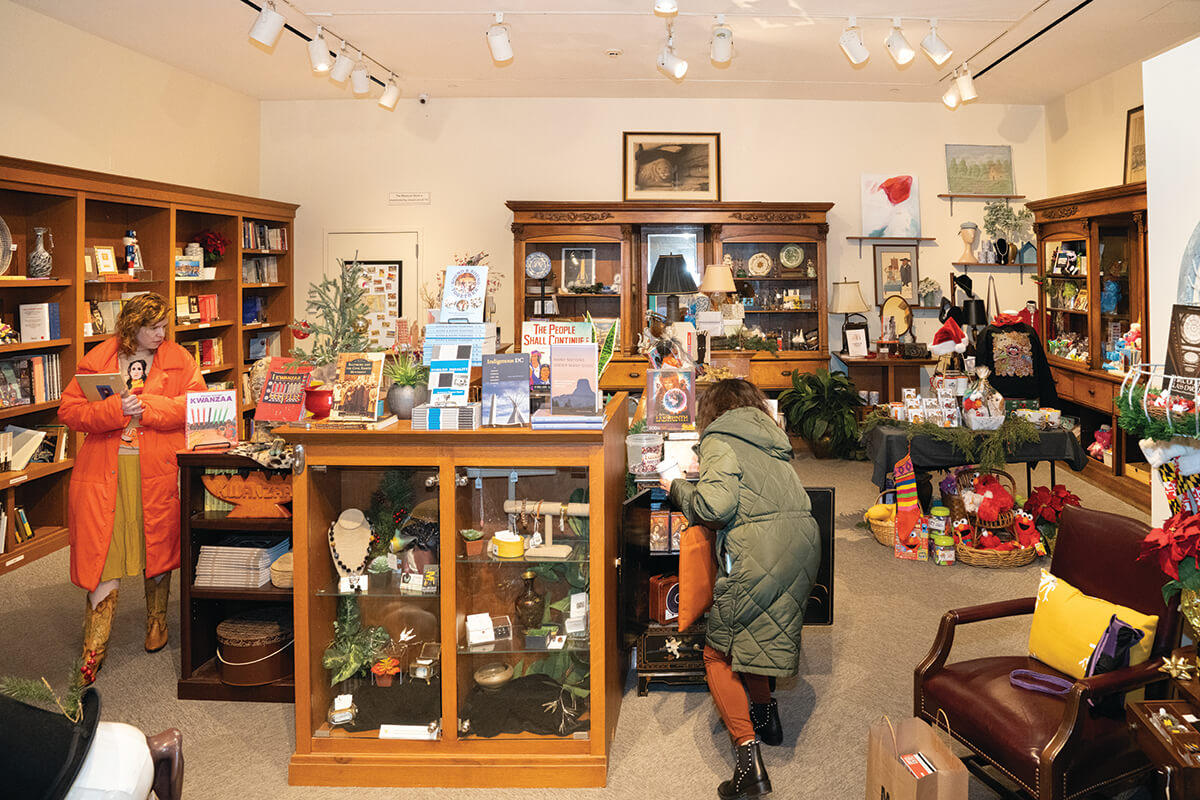
Reginald F. Lewis Museum
Long before there was the Smithsonian’s world-renowned National Museum of African American History & Culture in Washington, D.C., there was the Reginald F. Lewis Museum, located at a cultural crossroads on the edge of historic Jonestown in downtown Baltimore.
The Lewis Museum features more than 400 years of Black Maryland history in its halls and, over the years, has highlighted both the past and present, such as midcentury painter Ruth Starr Rose, who documented Black life on the Eastern Shore to modern-day photographer and West Baltimorean Devin Allen, whose images have graced the cover of Time magazine.
This same sort of expansive oeuvre is on display in the museum’s gift shop, which offers one-of-a-kind ways to celebrate the icons and imagery of Maryland’s Black history. Frederick Douglass merch and original prints, jewelry, and artwork made by local artists of color, as well as children’s books introducing little readers to Maryland’s iconic Black musicians, artists, athletes, and visionaries, are all great reasons to take advantage of the always-free shop admissions. Inventory rotates weekly, so it’s worth popping in on a semi-regular basis. And while you’re there, be sure to stop a while and watch the city go by through its grand floor-to-ceiling windows along President Street.
The Walters Art Museum
The Walters has roots in a core collection of art and artifacts bequeathed to the City of Baltimore in 1934 by its namesake scion, Henry Walters.
Spanning seven millennia of art from around the world, much of the collections are personal in nature, providing glimpses of what museums looked like in the 19th century, when private salon-style exhibits blended artistic techniques and periods to suit individual tastes. The vast Classical and Egyptian galleries in particular make me feel like Claudia in From the Mixed-Up Files of Mrs. Basil E. Frankweiler, with covetable Roman torcs and impassive sphinx figurines.
Fortunately, the gift shop provides the perfect place to scratch that same itch. Replicas of ancient Egyptian, Roman, Greek, Chinese, and Pre-Columbian earrings, cuff links, and pins in gold and silver are shockingly modern in their simplicity and design.
The paper and prints section echoes the global scope of the main collections, with illuminated Ethiopian holiday cards, Renaissance landscape prints, and notecards with delicate Japanese watercolors.
My personal favorites are the replica blueprints of the iconic Walters Museum building itself—the perfect insider gift for the Baltimorean who has everything.
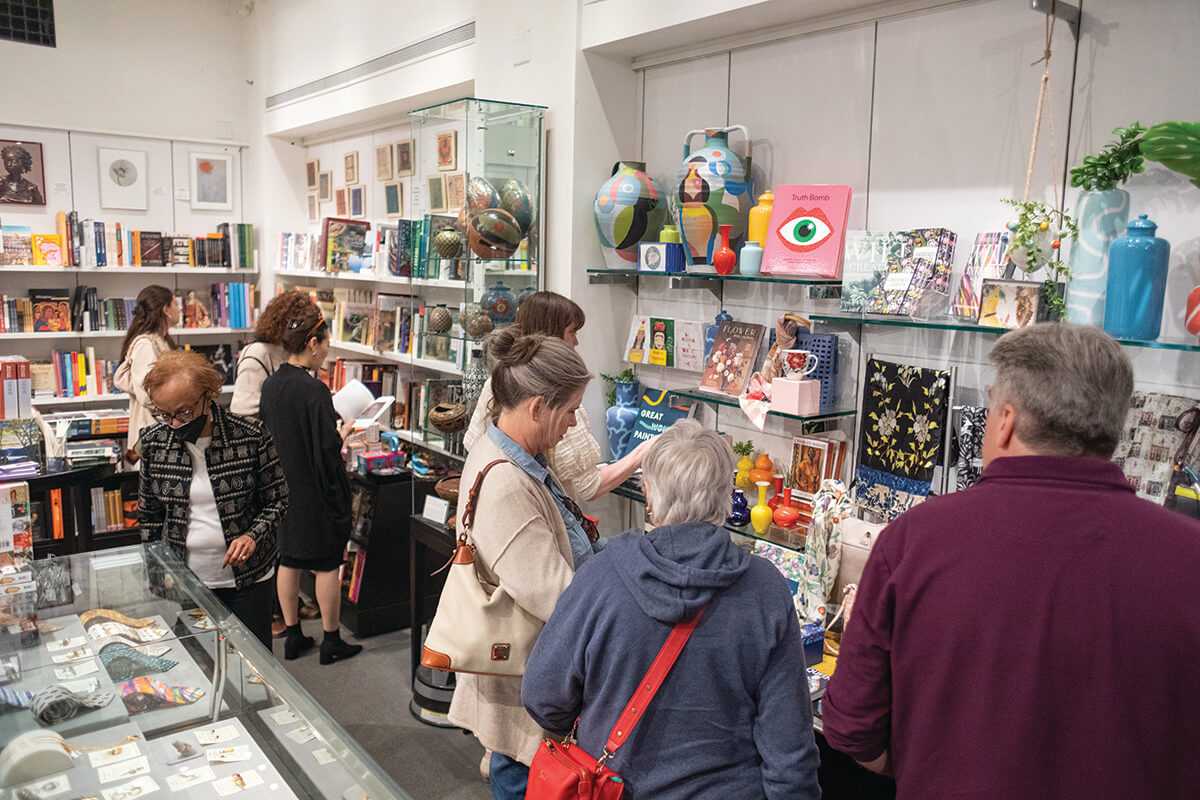
Small But Mighty
Many of Baltimore’s smaller institutions boast their own wildly cool shops with mission-inspired inventories that are delightful to explore.
The B&O Railroad Museum, for instance, has gifts for locomotive lovers of all ages, from striped engineer caps and model train kits to 19th-century replica railway maps and vintage Rails Across America comic books.
At the Edgar Allan Poe House & Museum, snap up Poe “Death Week” vigil candles, “Nevermore” highschool iron-on patches, and International Poe Fest swag.
At The National Great Blacks in Wax Museum, find books, clothing, and souvenirs highlighting notable African Americans, like Baltimore’s own Billie Holiday.
And the T-shirt game at the Babe Ruth Birthplace and Museum is on point, featuring an homage to the baseball icon’s original period uniform and a “Call It” top commemorating the Babe’s epic prediction of his own home run hit to deep center field in 1932, both of which will leave baseball fans with plenty of ways to rep their native son.
Meanwhile, you can find chemistry kits and glow-in-the-dark skeletons at the Maryland Science Center, stuffed animals and shark-tooth necklaces at the National Aquarium, and all sorts of books, games, and puzzles at Port Discovery’s brand-new, minority-owned Snug Books.